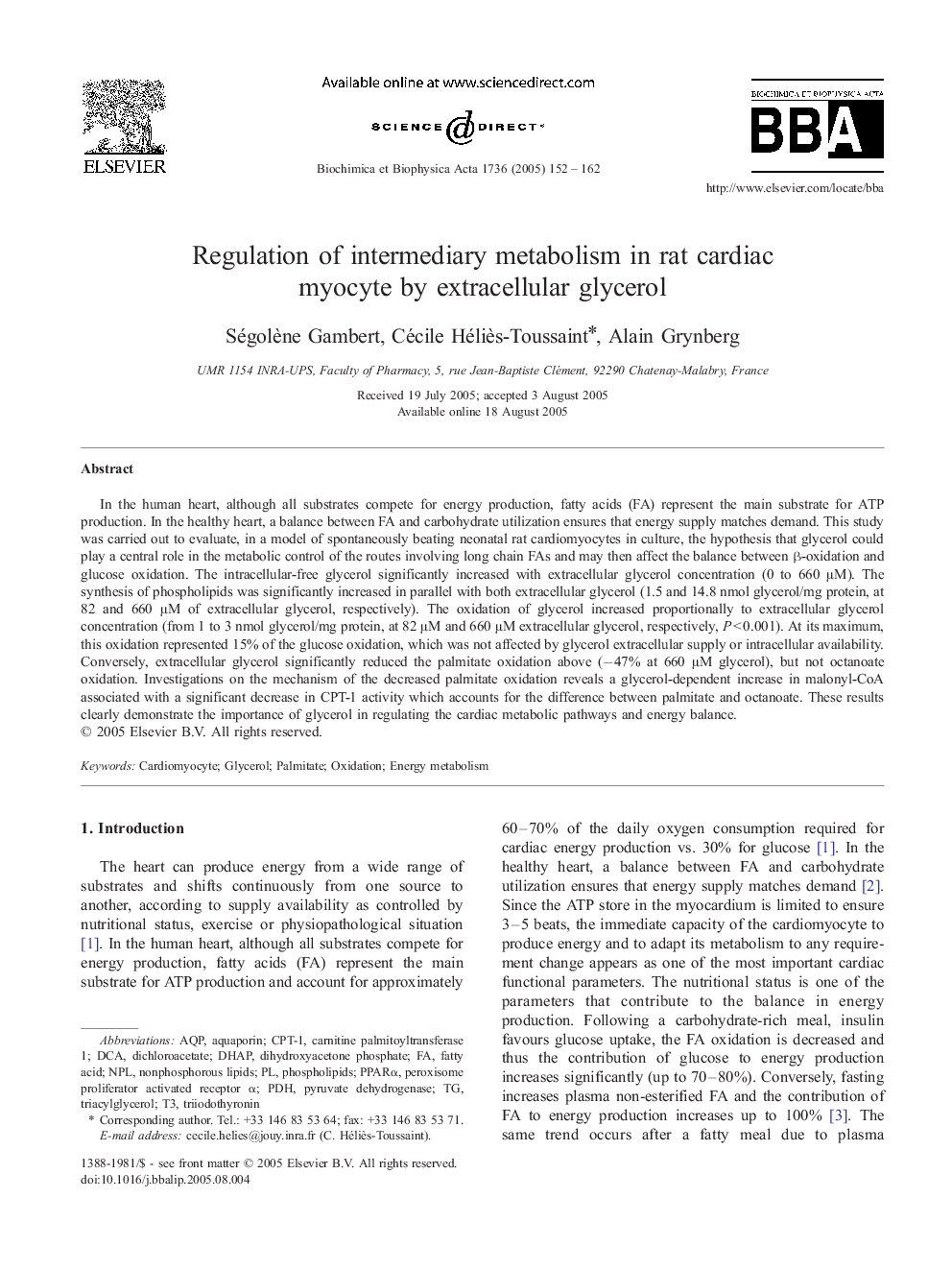| کد مقاله | کد نشریه | سال انتشار | مقاله انگلیسی | نسخه تمام متن |
|---|---|---|---|---|
| 9886515 | 1537830 | 2005 | 11 صفحه PDF | دانلود رایگان |
عنوان انگلیسی مقاله ISI
Regulation of intermediary metabolism in rat cardiac myocyte by extracellular glycerol
دانلود مقاله + سفارش ترجمه
دانلود مقاله ISI انگلیسی
رایگان برای ایرانیان
کلمات کلیدی
PPARαNPLPDHCPT-1AQPDHAPDCAaquaporin - آکواپورینFatty acid - اسید چربOxidation - اکسیداسیونtriacylglycerol - تری آسیل گلیسرول dihydroxyacetone phosphate - دی هیدروکسی استون فسفاتDichloroacetate - دی کلرواساتاتpalmitate - طلاییPhospholipids - فسفولیپیدCardiomyocyte - قلب و عروقEnergy metabolism - متابولیسم انرژیpyruvate dehydrogenase - پیرووات دهیدروژنازCarnitine palmitoyltransferase 1 - کارنتین پالمیتویل ترانسفراز 1Glycerol - گلیسرول یا گلیسیرینPeroxisome proliferator activated receptor α - گیرنده پروتئینزای پروکسیوم فعال α
موضوعات مرتبط
علوم زیستی و بیوفناوری
بیوشیمی، ژنتیک و زیست شناسی مولکولی
زیست شیمی
پیش نمایش صفحه اول مقاله

چکیده انگلیسی
In the human heart, although all substrates compete for energy production, fatty acids (FA) represent the main substrate for ATP production. In the healthy heart, a balance between FA and carbohydrate utilization ensures that energy supply matches demand. This study was carried out to evaluate, in a model of spontaneously beating neonatal rat cardiomyocytes in culture, the hypothesis that glycerol could play a central role in the metabolic control of the routes involving long chain FAs and may then affect the balance between β-oxidation and glucose oxidation. The intracellular-free glycerol significantly increased with extracellular glycerol concentration (0 to 660 μM). The synthesis of phospholipids was significantly increased in parallel with both extracellular glycerol (1.5 and 14.8 nmol glycerol/mg protein, at 82 and 660 μM of extracellular glycerol, respectively). The oxidation of glycerol increased proportionally to extracellular glycerol concentration (from 1 to 3 nmol glycerol/mg protein, at 82 μM and 660 μM extracellular glycerol, respectively, P < 0.001). At its maximum, this oxidation represented 15% of the glucose oxidation, which was not affected by glycerol extracellular supply or intracellular availability. Conversely, extracellular glycerol significantly reduced the palmitate oxidation above (â47% at 660 μM glycerol), but not octanoate oxidation. Investigations on the mechanism of the decreased palmitate oxidation reveals a glycerol-dependent increase in malonyl-CoA associated with a significant decrease in CPT-1 activity which accounts for the difference between palmitate and octanoate. These results clearly demonstrate the importance of glycerol in regulating the cardiac metabolic pathways and energy balance.
ناشر
Database: Elsevier - ScienceDirect (ساینس دایرکت)
Journal: Biochimica et Biophysica Acta (BBA) - Molecular and Cell Biology of Lipids - Volume 1736, Issue 2, 15 September 2005, Pages 152-162
Journal: Biochimica et Biophysica Acta (BBA) - Molecular and Cell Biology of Lipids - Volume 1736, Issue 2, 15 September 2005, Pages 152-162
نویسندگان
Ségolène Gambert, Cécile Héliès-Toussaint, Alain Grynberg,